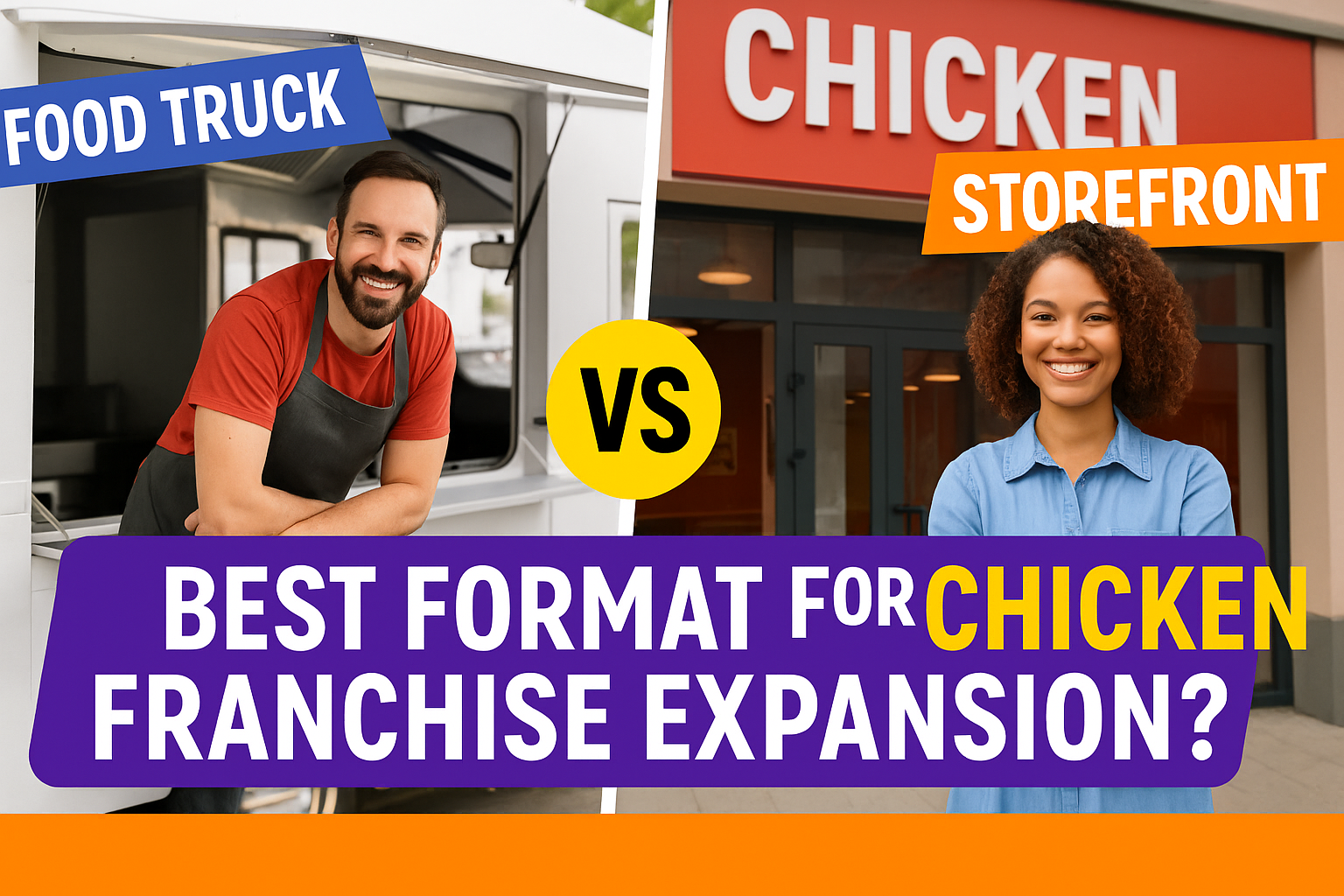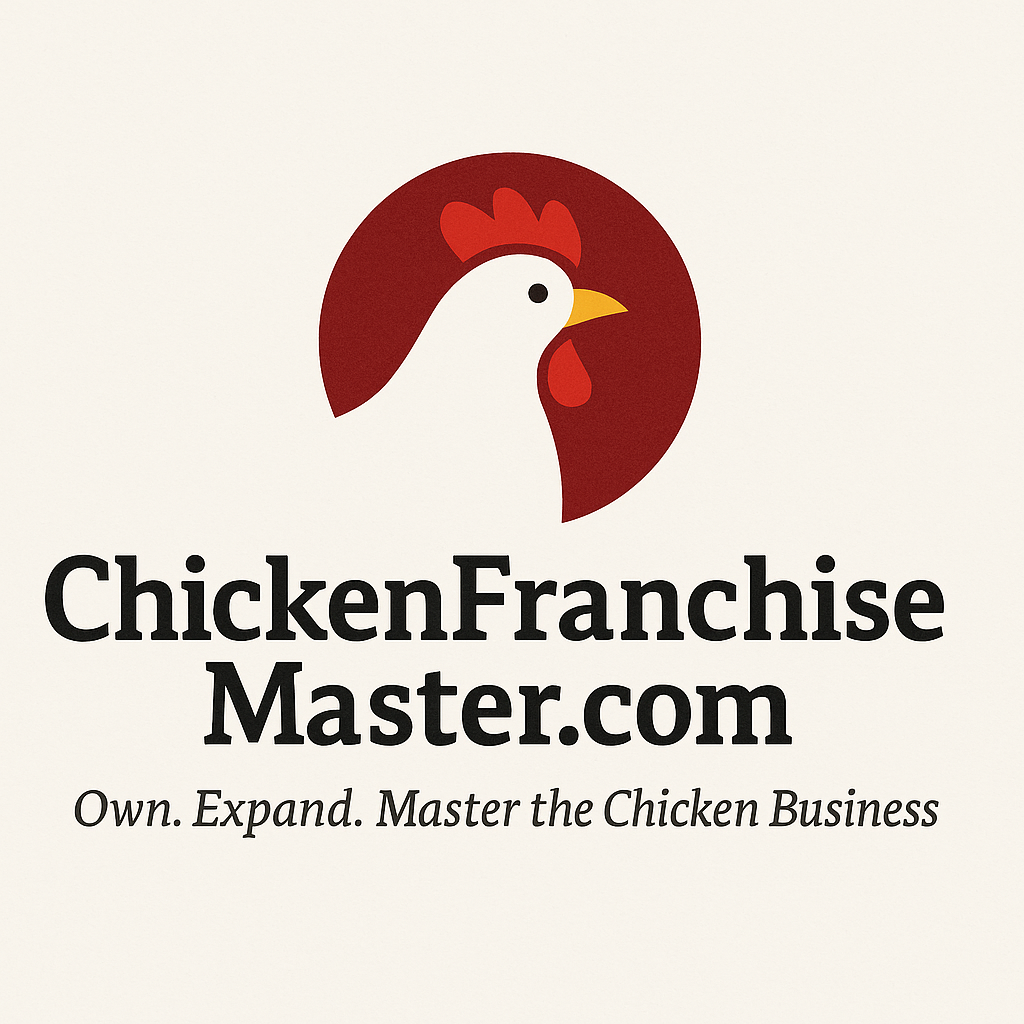
🐔 Introduction: Choosing the Right Chicken Franchise Format
So, you’ve decided to join the booming chicken franchise industry — but what’s the best way to launch? Should you go mobile with a food truck, or commit to a full-scale storefront location?
In this post, we break down the pros and cons of chicken food trucks vs. brick-and-mortar quick-service restaurants (QSRs) — including cost differences, market fit, operations, and ideal brand examples for each format.
🚚 Food Truck Chicken Franchises
✅ Pros of Chicken Food Trucks
- Lower Startup Costs: Food trucks typically cost between $100,000–$250,000, far less than a full storefront.
- High Mobility: Great for events, festivals, and rotating city locations.
- Faster to Launch: Can be up and running in as little as 2–4 months.
- Lean Staffing Needs: Typically 2–3 staff members per shift.
❌ Cons of Chicken Food Trucks
- Limited Capacity: Can only serve so many customers per hour.
- Weather-Dependent: Rain or extreme heat can reduce foot traffic.
- Restricted Menus: Smaller kitchens = fewer menu options.
- Parking & Permits: Must navigate local regulations and daily logistics.
🍗 Top Chicken Brands Offering Food Truck Franchises
- Krispy Krunchy Chicken: Frequently uses mobile units in urban and rural markets.
- Cluckin’ Chicken: A newer brand with a strong presence in food truck parks.
- FryDay’s Chicken: Known for limited-menu mobile concepts focused on crispy tenders and fries.
🏢 Storefront Chicken Franchises (QSR)
✅ Pros of Chicken Storefronts
- Higher Revenue Potential: Larger menus and dine-in options lead to higher ticket averages.
- Stronger Brand Identity: Easier to build local brand loyalty and community presence.
- Operational Stability: No worries about weather or relocation.
- Scalable Staffing Model: Allows for growth in shifts, kitchen size, and staff training.
❌ Cons of Chicken Storefronts
- Higher Initial Investment: Typically $350,000 to over $1 million including build-out.
- Longer Setup Time: Site selection, permits, and construction can take 6–12 months.
- Greater Overhead: Rent, utilities, and more complex payroll needs.
- Fixed Location Risk: Less flexibility if the area doesn’t perform well.
🍗 Top Chicken Brands with Storefront QSRs
- Popeyes Louisiana Kitchen: Internationally recognized, requires a strong storefront commitment.
- Jollibee: Focuses on flagship locations with dine-in, takeout, and delivery.
- Raising Cane’s: Minimal menu but large volume, ideal for standalone or high-traffic plaza stores.
💰 Investment Comparison Table
| Format | Average Startup Cost | Time to Launch | Staffing Needed | Revenue Potential |
|---|---|---|---|---|
| Food Truck | $100K–$250K | 2–4 months | 2–3 employees | Moderate |
| Storefront QSR | $350K–$1M+ | 6–12 months | 5–15 employees | High |
🧠 Which Format is Best for You?
| If You Want… | Choose… |
|---|---|
| Low cost + quick start | Food Truck |
| Flexibility and mobility | Food Truck |
| Higher income and brand presence | Storefront QSR |
| Long-term multi-unit growth | Storefront QSR |
| Simpler staffing and lower operational risk | Food Truck |
🔍 Final Thoughts: Format Follows Strategy
Ultimately, the right format depends on your capital, timeline, market, and long-term vision. Many savvy investors actually start with a food truck to build brand awareness, then expand into storefronts when cash flow allows.
At ChickenFranchiseMaster.com, powered by Star Brands Consulting Group, we help you evaluate all format options based on your local market conditions, brand ambitions, and franchise budget. Whether you’re going mobile or full-scale, we’re here to help you own, expand, and master your chicken franchise journey — from startup to success.
📩 Ready to explore your chicken franchise options? Let’s connect today and design a launch plan tailored just for you.

Leave a Reply